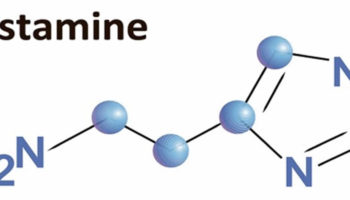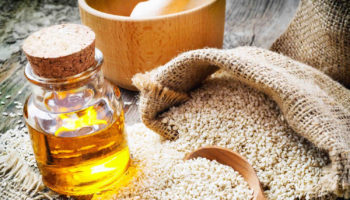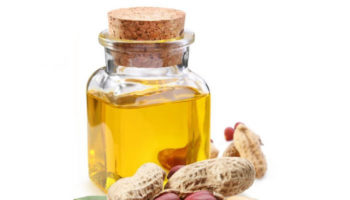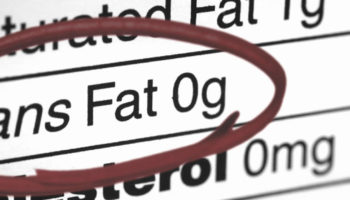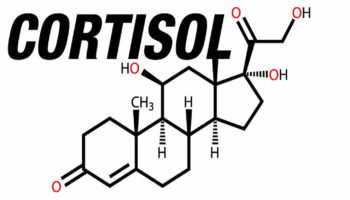What is edamame
Edamame (vegetable soybean) or edamame beans, is a preparation of immature soybeans in the pod, found in cuisines with origins from East Asia. The soybean pods are boiled or steamed and served with salt. In Japan, edamame literally means, “stem bean” that is usually blanched in 4% salt water. When the edamame beans are outside the pod, the term mukimame is sometimes used. Edamame is a popular side dish at Japanese izakaya restaurants with local varieties being in demand, depending on the season 1. Salt and garlic are typical condiments for edamame. In Japan, a coarse salt wet with brine is preferred on beans eaten directly from the pod.
The soybean pod color is important, and bright-green is most desirable. Yellowing of the soybean pods reflects freshness decline and degradation of ascorbic acid. Sensory evaluation of stored vegetable soybean showed that the taste of the seeds is mainly determined by sucrose, glutamic acid and alanine. Flavor and texture of boiled vegetable soybean are also highly correlated to their sensory scores.
The boiled soybean contain a characteristic sweet flower-like and beany flavor. Vegetable soybean is as nutritious as other soybean products, and a good source of tocopherols, dietary fibers and ascorbic acid. Trypsin inhibitors and antinutritional factors remain in boiled seeds.
Edamame pods may be boiled in water, steamed, or microwaved. The ends of the pod are sometimes cut before boiling or steaming. The most common preparations use salt for taste, either dissolved in the boiling water before introducing the soybean pods or added after cooking.
Green soybean pods are picked before they fully ripen, typically 35 to 40 days after the crop first flowers 2. Soybeans harvested at this stage are sweeter because they contain more sucrose than soybeans picked later in the growing season 3. Other factors contributing to edamame’s flavor include free amino acids such as glutamic acid, aspartic acid, and alanine. Often these unbound amino acids decrease as the pods fully expand and ripen 4.
Table 1. Edamame beans nutrition facts
Nutrient | Unit | cup 30 g | Value per 100 g | ||||||||||||||||
|---|---|---|---|---|---|---|---|---|---|---|---|---|---|---|---|---|---|---|---|
| Proximates | |||||||||||||||||||
| Energy | kcal | 140 | 467 | ||||||||||||||||
| Protein | g | 13.00 | 43.33 | ||||||||||||||||
| Total lipid (fat) | g | 7.00 | 23.33 | ||||||||||||||||
| Carbohydrate, by difference | g | 8.00 | 26.67 | ||||||||||||||||
| Fiber, total dietary | g | 5.0 | 16.7 | ||||||||||||||||
| Sugars, total | g | 2.00 | 6.67 | ||||||||||||||||
| Minerals | |||||||||||||||||||
| Calcium, Ca | mg | 40 | 133 | ||||||||||||||||
| Iron, Fe | mg | 2.40 | 8.00 | ||||||||||||||||
| Sodium, Na | mg | 140 | 467 | ||||||||||||||||
| Vitamins | |||||||||||||||||||
| Vitamin C, total ascorbic acid | mg | 2.0 | 6.7 | ||||||||||||||||
| Vitamin A, IU | IU | 0 | 0 | ||||||||||||||||
| Lipids | |||||||||||||||||||
| Fatty acids, total saturated | g | 0.999 | 3.330 | ||||||||||||||||
| Fatty acids, total trans | g | 0.000 | 0.000 | ||||||||||||||||
| Cholesterol | mg | 0 | 0 | ||||||||||||||||
Ingredients: SOYBEANS, SEA SALT, SOYBEAN OIL.
[Source: United States Department of Agriculture Agricultural Research Service 5]Table 2. Soybeans green (raw) nutrition facts
| Nutrient | Unit | Value per 100 g | |||||||||
| Approximates | |||||||||||
| Water | g | 67.5 | |||||||||
| Energy | kcal | 147 | |||||||||
| Energy | kJ | 614 | |||||||||
| Protein | g | 12.95 | |||||||||
| Total lipid (fat) | g | 6.8 | |||||||||
| Ash | g | 1.7 | |||||||||
| Carbohydrate, by difference | g | 11.05 | |||||||||
| Fiber, total dietary | g | 4.2 | |||||||||
| Minerals | |||||||||||
| Calcium, Ca | mg | 197 | |||||||||
| Iron, Fe | mg | 3.55 | |||||||||
| Magnesium, Mg | mg | 65 | |||||||||
| Phosphorus, P | mg | 194 | |||||||||
| Potassium, K | mg | 620 | |||||||||
| Sodium, Na | mg | 15 | |||||||||
| Zinc, Zn | mg | 0.99 | |||||||||
| Copper, Cu | mg | 0.128 | |||||||||
| Manganese, Mn | mg | 0.547 | |||||||||
| Selenium, Se | µg | 1.5 | |||||||||
| Vitamins | |||||||||||
| Vitamin C, total ascorbic acid | mg | 29 | |||||||||
| Thiamin | mg | 0.435 | |||||||||
| Riboflavin | mg | 0.175 | |||||||||
| Niacin | mg | 1.65 | |||||||||
| Pantothenic acid | mg | 0.147 | |||||||||
| Vitamin B-6 | mg | 0.065 | |||||||||
| Folate, total | µg | 165 | |||||||||
| Folic acid | µg | 0 | |||||||||
| Folate, food | µg | 165 | |||||||||
| Folate, DFE | µg | 165 | |||||||||
| Vitamin B-12 | µg | 0 | |||||||||
| Vitamin A, RAE | µg | 9 | |||||||||
| Retinol | µg | 0 | |||||||||
| Vitamin A, IU | IU | 180 | |||||||||
| Vitamin D (D2 + D3) | µg | 0 | |||||||||
| Vitamin D | IU | 0 | |||||||||
| Lipids | |||||||||||
| Fatty acids, total saturated | g | 0.786 | |||||||||
| 14:00:00 | g | 0.006 | |||||||||
| 16:00:00 | g | 0.57 | |||||||||
| 18:00:00 | g | 0.21 | |||||||||
| Fatty acids, total monounsaturated | g | 1.284 | |||||||||
| 16:1 undifferentiated | g | 0.011 | |||||||||
| 18:1 undifferentiated | g | 1.262 | |||||||||
| 20:01:00 | g | 0.011 | |||||||||
| Fatty acids, total polyunsaturated | g | 3.2 | |||||||||
| 18:2 undifferentiated | g | 2.823 | |||||||||
| 18:3 undifferentiated | g | 0.376 | |||||||||
| Fatty acids, total trans | g | 0 | |||||||||
| Cholesterol | mg | 0 | |||||||||
| Phytosterols | mg | 50 | |||||||||
| Amino Acids | |||||||||||
| Tryptophan | g | 0.157 | |||||||||
| Threonine | g | 0.516 | |||||||||
| Isoleucine | g | 0.57 | |||||||||
| Leucine | g | 0.926 | |||||||||
| Lysine | g | 0.775 | |||||||||
| Methionine | g | 0.157 | |||||||||
| Cystine | g | 0.118 | |||||||||
| Phenylalanine | g | 0.586 | |||||||||
| Tyrosine | g | 0.464 | |||||||||
| Valine | g | 0.576 | |||||||||
| Arginine | g | 1.042 | |||||||||
| Histidine | g | 0.348 | |||||||||
| Alanine | g | 0.582 | |||||||||
| Aspartic acid | g | 1.508 | |||||||||
| Glutamic acid | g | 2.433 | |||||||||
| Glycine | g | 0.539 | |||||||||
| Proline | g | 0.607 | |||||||||
| Serine | g | 0.721 | |||||||||
| Other | |||||||||||
| Caffeine | mg | 0 | |||||||||
| Theobromine | mg | 0 | |||||||||
| Flavones | |||||||||||
| Luteolin | mg | 0 | |||||||||
| Flavonols | |||||||||||
| Kaempferol | mg | 1.2 | |||||||||
| Myricetin | mg | 0 | |||||||||
| Quercetin | mg | 0 | |||||||||
| Isoflavones | |||||||||||
| Daidzein | mg | 20.34 | |||||||||
| Genistein | mg | 22.57 | |||||||||
| Glycitein | mg | 7.57 | |||||||||
| Total isoflavones | mg | 48.95 | |||||||||
| Biochanin A | mg | 0 | |||||||||
| Formononetin | mg | 0 | |||||||||
| Coumestrol | mg | 0 | |||||||||
Edamame health benefits
Soybeans are a common vegetable that can be used to extract soybean oil and make soy milk. Polyphenols, mainly including phenolic acid and flavonoids like flavones and flavonols, are among the most important bioactive components extracted from soybeans 6. It was reported that phenolic acid mainly contributed to the antioxidant capacities of many natural products 7. Many researchers suggested that polyphenols possessed biological effects like antioxidation and anti-inflammation, which in turn provided cardiovascular protection 8. In an in test tube study, phenolic-rich extracts from soybeans were found to inhibit the activities of α-amylase, α-glucosidase, and angiotensin-I converting enzyme (ACE), which are key enzymes linked to diabetes and hypertension 9. Thus, researchers came to the conclusion that soybeans have health-promoting effects including anti-diabetes and anti-hypertension. Another study investigated the effects of saponin (2-phenyl-benzopyrane), a soybean flavonoid, on glucose tolerance and risk factors for atherosclerosis 10. In saponin-treated animals, the LDL “bad” cholesterol/triglyceride ratio was increased, and triglyceride, very low-density lipoprotein cholesterol (VLDL-C), lipid hydroperoxide, and total cholesterol/HDL “good” cholesterol ratio were decreased. However, no effects were found on glucose tolerance, LDL “bad” cholesterol, superoxide dismutase (SOD), and glutathione peroxidase (GPx) in the experimental groups. These observations indicated that saponin from soybeans might improve the serum lipid profile due to direct antioxidant activity.
It was reported that soybean products could be enhanced in nutritional value after fermentation 11. For instance, doenjang was more effective at preventing diet-induced visceral fat accumulation than non-fermented soybeans in rats, by stimulating carnitine palmitoyltransferase-1 activity and suppressing fatty acid synthase activity, possibly due to the higher content of aglycone isoflavones 12.
It was also reported that soybeans contain considerable phytoestrogens, like isoflavones (mainly genistein and daidzein) and lignans, which are safe and natural estrogen receptor modulator alternatives to hormone therapy and possess antioxidant and cardioprotective effects 13.
Phytoestrogens are nonsteroidal plant compounds of diverse structure that are found in many fruits, vegetables and grains 14. The most common types of phytoestrogens are coumestans, lignans and isoflavones. These compounds structurally resemble oestradiol (E2) and are shown to have weak oestrogenic activity 15. When ingested in relatively large quantities, dietary phytoestrogens have been shown to have significant biological effects in several animal species 16 and in humans 17. In humans, they appear to have both oestrogenic and anti-oestrogenic effects, depending on the concentrations of circulating endogenous oestrogens and oestrogen receptors 18.
Isoflavones are among the most oestrogenically potent phytoestrogens; the major dietary isoflavones, genistein and daidzein, are found almost exclusively in legumes such as soybean, chick peas, lentils and beans 19. Urinary excretion of equol, a weak oestrogen, in humans eating soy-supplemented diets can greatly exceed the concentration of urinary endogenous oestrogens; this enhances the plausibility of human physiological health effects 20. Other classes of phytoestrogens—lignans and prenylated flavonoids—also have potent oestrogenic activity but are not as well studied 21.
Soy, a particularly abundant source of isoflavones, is a staple ingredient in the traditional Asian diet. It is postulated that high intake of soy among Asian women may account for lower rates of some menopausal symptoms in this group. Asian populations, such as those in Japan, Taiwan and Korea, are estimated to consume 20 to 150 mg per day of isoflavones, with a mean of about 40 mg from tofu (soy bean curd) and miso (soy bean paste). Soy includes such products as tofu, miso, aburage (fried thin tofu) and fermented tempeh or boiled soy beans. Further evidence that soy might be beneficial is suggested by a cohort study of Japanese women 22, which found a significant inverse association between frequency of flushes and higher levels of soy consumption. However, the findings of this study are contradicted by data from a cross-sectional study, which found that women who frequently consumed soy products were not less likely to report hot flushes or night sweats than women who never consumed soy products 23. Thus it is not clear whether frequent soy consumption explains the lower rate of hot flushes among different ethnic groups.
Potential adverse effects of phytoestrogens have included deficits in sexual behaviour in rats and impaired fertility in livestock 24. No specific examples of toxicity among humans have been noted in countries in which soy is consumed regularly 25. It is generally considered difficult for humans to consume the quantity of isoflavones from natural soy foods needed to reach toxicological levels that induce pathological effects, as recorded in animals.
Soybean’s isoflavones were hailed as magical natural component that attribute to prevent some major prevailing health concerns. Consumption of soy products have been linked to reduction in incidence or severity of chronic diseases such as cardiovascular, breast and prostate cancers, menopausal symptoms, bone loss, etc. Although there have been many studies on soy products, there are still uncertainties about soy’s health effects.
- Consuming soy protein in place of other proteins may lower levels of LDL (“bad”) cholesterol to a small extent 26. Regular consumption of 1 to 2 servings of soy protein daily (15 to 30 g) was associated with a significant improvement in lipoprotein risk factors for coronary heart disease.
- Soy isoflavone supplements may help to reduce the frequency and severity of menopausal hot flashes, but the effect may be small 27, 28.
- Soybean isoflavones, especially genistein and daidzein, are common phytoestrogens recognized as selective estrogen receptor modulators that possess cardioprotective effects in vitro and in vivo, but there is a lack of promising outcomes in clinical trials. In a six-month randomized controlled trial, purified daidzein did not exhibit significant effects on body weight, body mass index, waist and hip circumferences, waist to hip ratio, body fat percentage, fat mass, and free fat mass in equol-producing postmenopausal women with prehypertension 29. In the same study, it was found that purified daidzein had no significant effect on blood pressure and vascular function 30. However, in the above two studies urinary isoflavones suggested good compliance of the patients with the interventions.
- It’s uncertain whether soy supplements can relieve cognitive problems associated with menopause 31.
- Current evidence suggests that soy isoflavone mixtures do not slow bone loss in Western women during or after menopause 32.
- Diets containing soy protein may slightly reduce blood pressure 33.
- Cardiovascular disease is a major cause of morbidity and mortality in developed and developing countries. Evidence is increasing that the consumption of soy protein instead of animal protein lowers blood cholesterol levels and may lower the risk of cardiovascular disease. A meta-analysis showed that the substitution of soy protein for animal protein significantly lowered total cholesterol, low-density lipoprotein (LDL “bad”) cholesterol, and triglycerides without affecting high-density (HDL “good”) lipoprotein cholesterol 34. Since then, well-controlled studies of soy protein and soy-derived isoflavones have demonstrated that the impact of soy protein consumption on LDL cholesterol levels was small 35, 36. Dietary soy may be beneficial to cardiovascular health because of its high polyunsaturated fat, fiber, vitamin, and mineral content combined with its low saturated fat content 37.
- Results from clinical trials also indicated that a combination of isoflavones and soybean protein might not be an effective intervention to prevent cardiovascular disease 38, 39. In a randomized controlled trial, isoflavone soybean protein supplementation did not result in a significant reduction of subclinical atherosclerosis progression in postmenopausal women 38. While subgroup analysis indicated that isoflavone soybean protein supplementation could reduce subclinical atherosclerosis in healthy young women (median age: 53 years) less than five years postmenopausal who were at low risk for cardiovascular diseases. In a double-blind randomized, placebo-controlled trial conducted among 180 postmenopausal Chinese women, soybean protein combined with isoflavones at the provided dosage (15 g soybean protein, 100 mg isoflavones) had no significant effect on measured cardiovascular risk factors, including serum HDL “good” cholesterol, LDL “bad” cholesterol, total cholesterol, triglyceride and highly sensitive C-reactive protein 39.
- There is a fair amount of population-based evidence showing that soy isoflavones can protect against prostate cancer 40. Unfortunately, the mechanisms supporting this association have not yet been resolved. Nonetheless, mechanistic explanations for how soy isoflavones can reduce cancer risk or disrupt the biology of transformed cells are increasing. Although the role of soy isoflavones in prostate cancer has traditionally been linked with the suppression of proliferation and the induction of apoptosis, recently there is a compelling evidence that soy isoflavones regulate other cancer-related cellular processes. For example, a reasonable number of reports suggests that the antioxidant actions of soy isoflavones are worth exploring for cancer prevention.
- There’s not enough scientific evidence to determine whether soy supplements are effective for any other health uses.
Soybean side effects
Except for people with soy allergies, soy is believed to be safe when consumed in normal dietary amounts. However, the safety of long-term use of high doses of soy extracts has not been established.
- The most common side effects of soy are digestive upsets, such as stomach pain and diarrhea.
- Antinutritional factors: Several of the soybean proteins have been found to exert specific physiological effects. These are the trypsin inhibitors and the hemagglutinins (lectins). Protease inhibiting proteins are widespread in nature, but the trypsin inhibitors of soybeans are the best known and most thoroughly studied. Inhibition of trypsin by raw soybeans has been reported more than 50 years ago. Soybeans contain two types of trypsin inhibitors. Both bear the names of scientists who first isolated and characterized them. They are respectively known as the Kunitz inhibitor with a molecular weight in the range of 20000, and the Bowman-Birk inhibitor which is a much smaller polypeptide 41. It has been known for a long time that raw soybeans or unheated soybean meal will impair growth when fed to young rats or chicks. This effect is completely eliminated when the soybean component is properly heated. Since trypsin inhibitors are also heat labile, it was concluded that their presence in the diet is responsible for the suppression of growth. In fact, growth is retarded if the inhibitors are added to diets containing heat-treated soybean meal. A logical explanation for the harmful effect of the inhibitors could be that the inhibition of trypsin in the digestive track of the animal impairs protein digestibility and utilization. This hypothesis had to be abandoned, however, when it was observed that trypsin inhibitor preparations did impair growth when fed with diets containing completely pre-digested proteins. Inhibition of trypsin is not the only physiological effect of the trypsin inhibitors. It has been observed that their ingestion can result in increased pancreatic secretion and hypertrophy of the pancreas. Increased secretion of enzymes into the digestive tube represents an internal loss of protein. Since the proteins excreted by the pancreas are particularly rich in sulphur containing amino acids, this internal loss could be specially important if the diet is marginal in methionine/cystine.Are soybean trypsin inhibitors toxic to humans ? The bulk of the available information on their biochemical, physiological and nutritional properties stems from experimentation with animals or from in vitro investigations. There is no direct evidence as to the physiological effect of the inhibitors on humans. Nevertheless, it has become customary to take the necessary precautions for the removal or inactivation of trypsin inhibitors from soybean products intended for human consumption.The lectins, formerly known as hemagglutinins, are proteins which possess the ability to agglutinate red blood cells. They are widely distributed in plants and some, such as the castor bean lectin ricin, are highly toxic. The lectin found in raw soybeans has, apparently, no observable dietary effect, good or bad. Furthermore, it too is easily inactivated by heat.
- Long-term use of soy isoflavone supplements might increase the risk of endometrial hyperplasia (a thickening of the lining of the uterus that may lead to cancer). Soy foods do not appear to increase the risk of endometrial hyperplasia.
- Current evidence indicates that it’s safe for women who have had breast cancer or who are at risk for breast cancer to eat soy foods 42. However, it’s uncertain whether soy isoflavone supplements are safe for these women 43.
- A prospective cohort study (Shanghai Women’s Health Study) was conducted in 66,832 Chinese women (aged 40–70 y) who had no cardiovascular disease or cancer at baseline, found the women who habitually consume soy isoflavones over 10 years may be associated with a modest but significant increase in risk of ischemic stroke 44. However to date, limited epidemiologic studies that stroke risk associated with phytoestrogens have been mixed and inconclusive. Isoflavone intake was not associated with stroke incidence in Dutch women 45 but showed a positive, although nonsignificant, association with stroke mortality in 2 studies of US women 46, 47. In Asian countries, where soy consumption is traditionally common and relatively high (median isoflavone intake: 15–40 mg/d in Asian populations vs. 0.3–0.4 mg/d in Western populations), increased isoflavone intake was associated with lower stroke incidence in Japanese women 48 but not associated with stroke mortality in women from another Japanese cohort 49 or in women in the Singapore Chinese Health Study 50. The discrepant findings from these studies may be partly explained by differences in the amount of consumption, type of soy products consumed, population characteristics, assessment of isoflavone exposure, and variations in isoflavone metabolism.
- Bunting, Chris (Jan 14, 2014). Drinking Japan: A Guide to Japan’s Best Drinks and Drinking Establishments. Tuttle Publishing. p. 20.[↩]
- Fehr, W. R.; Caviness, C. E.; Burmood, D. T.; Pennington, J. S. (1971). “Stage of Development Descriptions for Soybeans, Glycine Max (L.) Merrill”. Crop Science. 11 (6): 929–931. doi:10.2135/cropsci1971.0011183X001100060051x.[↩]
- Shanmugasundaram, S.; Masuda, Ryoichi; Tsou, S.C.S.; Hong, T.L. (1991). Vegetable Soybean Research Needs for Production and Quality Improvement. http://pdf.usaid.gov/pdf_docs/PNABK804.pdf[↩]
- )Shanmugasundaram, S.; Masuda, Ryoichi; Tsou, S.C.S.; Hong, T.L. (1991). Vegetable Soybean Research Needs for Production and Quality Improvement. http://pdf.usaid.gov/pdf_docs/PNABK804.pdf).
Figure 1. Edamame beans
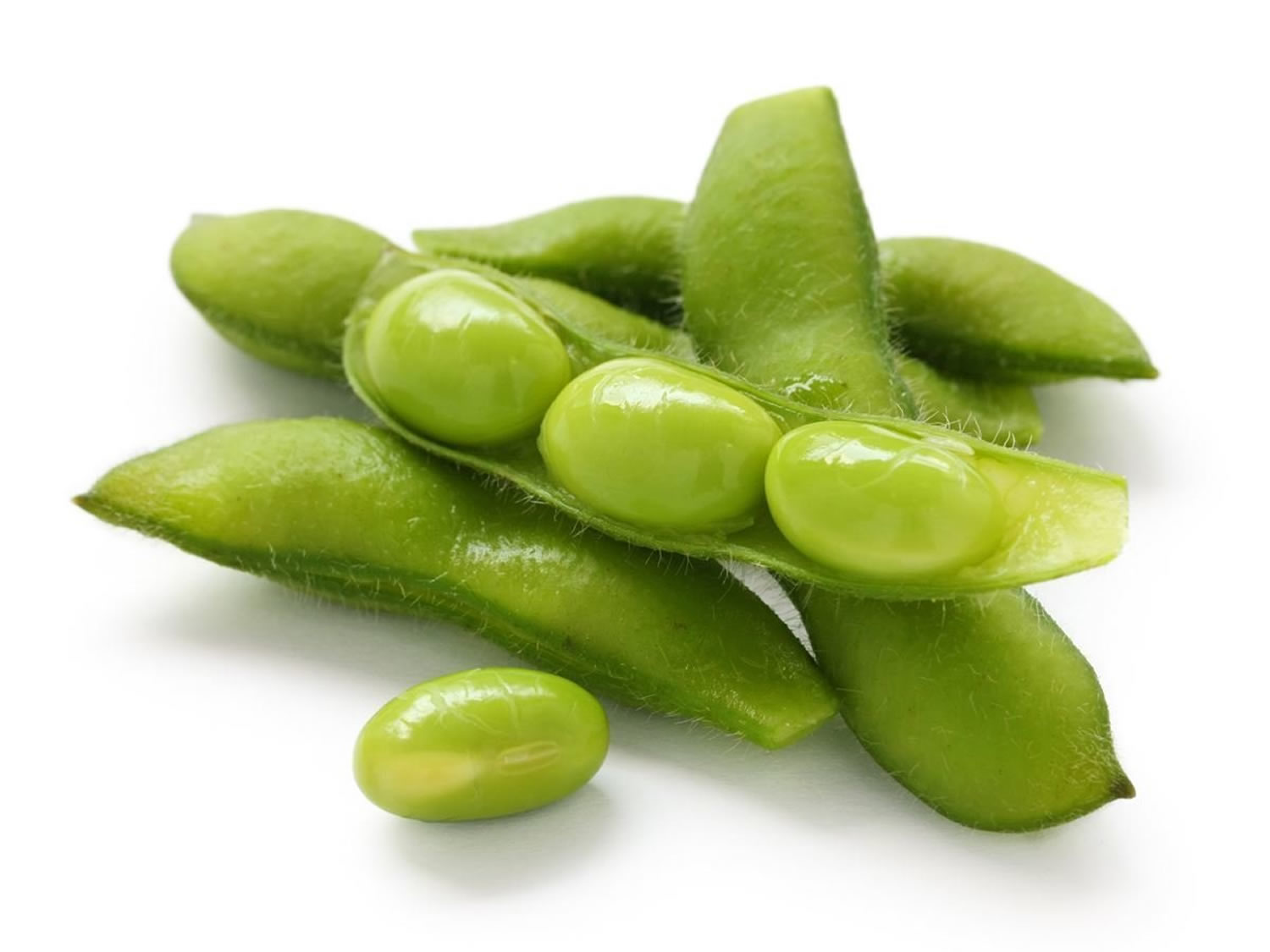
Edamame nutrition facts
The United States Department of Agriculture states that edamame beans are a “soybean that can be eaten fresh and are best known as a snack with a nutritional punch”.
Edamame and other preparations of soybeans are rich in protein, dietary fiber, and micronutrients, particularly folate, manganese, phosphorus and vitamin K (Table 1 and 2).
The balance of fatty acids in 100 grams of edamame is 361 mg of omega-3 fatty acids to 1794 mg of omega-6 fatty acids.
Raw soybeans are 20% fat, including saturated fat (3%), monounsaturated fat (4%) and polyunsaturated fat, mainly as linoleic acid (Table 1 and 2).
Within soybean oil or the lipid portion of the seed is contained four phytosterols: stigmasterol, sitosterol, campesterol, and brassicasterol accounting for about 2.5% of the lipid fraction; and which can be converted into steroid hormones. Additionally soybeans are a rich source of sphingolipids ((Sphingolipids in food and the emerging importance of sphingolipids to nutrition. J Nutr. 1999 Jul;129(7):1239-50. http://jn.nutrition.org/content/129/7/1239.long[↩]
- United States Department of Agriculture Agricultural Research Service. National Nutrient Database for Standard Reference Release 28. https://ndb.nal.usda.gov/ndb/search/list[↩][↩]
- Tang G-Y, Meng X, Li Y, Zhao C-N, Liu Q, Li H-B. Effects of Vegetables on Cardiovascular Diseases and Related Mechanisms. Nutrients. 2017;9(8):857. doi:10.3390/nu9080857. https://www.ncbi.nlm.nih.gov/pmc/articles/PMC5579650/[↩]
- Li H.B., Wong C.C., Cheng K.W., Chen F. Antioxidant properties in vitro and total phenolic contents in methanol extracts from medicinal plants. LWT-Food Sci. Technol. 2008;41:385–390. doi: 10.1016/j.lwt.2007.03.011.[↩]
- Fu L., Xu B.T., Xu X.R., Gan R.Y., Zhang Y., Xia E.Q., Li H.B. Antioxidant capacities and total phenolic contents of 62 fruits. Food Chem. 2011;129:345–350. doi: 10.1016/j.foodchem.2011.04.079.[↩]
- Soybean phenolic-rich extracts inhibit key-enzymes linked to type 2 diabetes (α-amylase and α-glucosidase) and hypertension (angiotensin I converting enzyme) in vitro. Ademiluyi AO, Oboh G. Exp Toxicol Pathol. 2013 Mar; 65(3):305-9. https://www.ncbi.nlm.nih.gov/pubmed/22005499/[↩]
- Antioxidant effect of saponin: potential action of a soybean flavonoid on glucose tolerance and risk factors for atherosclerosis. Rodrigues HG, Diniz YS, Faine LA, Galhardi CM, Burneiko RC, Almeida JA, Ribas BO, Novelli EL. Int J Food Sci Nutr. 2005 Mar; 56(2):79-85. https://www.ncbi.nlm.nih.gov/pubmed/16019317/[↩]
- Use of Bacillus amyloliquefaciens HZ-12 for High-Level Production of the Blood Glucose Lowering Compound, 1-Deoxynojirimycin (DNJ), and Nutraceutical Enriched Soybeans via Fermentation. Cai D, Liu M, Wei X, Li X, Wang Q, Nomura CT, Chen S. Appl Biochem Biotechnol. 2017 Mar; 181(3):1108-1122. https://www.ncbi.nlm.nih.gov/pubmed/27826807/[↩]
- Doenjang, a fermented soybean paste, decreased visceral fat accumulation and adipocyte size in rats fed with high fat diet more effectively than nonfermented soybeans. Kwak CS, Park SC, Song KY. J Med Food. 2012 Jan; 15(1):1-9.https://www.ncbi.nlm.nih.gov/pubmed/22082067/[↩]
- The functional effect of soybean extract and isolated isoflavone on myocardial infarction and ventricular dysfunction: the soybean extract on myocardial infarction. Miguez AC, Francisco JC, Barberato SH, Simeoni R, Précoma D, do Amaral VF, Rodrigues E, Olandoski M, de Noronha L, Greca FH, de Carvalho KA, Faria-Neto JR, Guarita-Souza LC. J Nutr Biochem. 2012 Dec; 23(12):1740-8. https://www.ncbi.nlm.nih.gov/pubmed/22717376/[↩]
- Knight D, Eden JA. A review of the clinical effects of phytoestrogens. Obstetrics and Gynecology 1996;87:897-904. https://www.ncbi.nlm.nih.gov/pubmed/8677131[↩]
- Setchell KDR. Phytoestrogens: the biochemistry, physiology, and implications for human health of soy isoflavones. American Journal of Clinical Nutrition 1998;68(Suppl):1333-46.[↩]
- Adlercreutz H. Phytoestrogens: epidemiology and a possible role in cancer protection. Environmental Health Perspectectives 1995;103(Suppl 7):103-12.[↩]
- Wilcox G, Wahlqvist ML, Burger HG, Medley G. Oestrogenic effects of plant foods in postmenopausal women. BMJ 1990;301:905-6. https://www.ncbi.nlm.nih.gov/pmc/articles/PMC1664107/pdf/bmj00202-0027b.pdf[↩]
- Bolego C, Poli A, Cignarella A, Paoletti R. Phytoestrogens: pharmacological and therapeutic perspectives. Current Drug Targets 2003;4:77-87. https://www.ncbi.nlm.nih.gov/pubmed/12528992[↩]
- Cassidy A, Bingham S, Carlson J, Setchell KDR. Biological effects of plant estrogens in premenopausal women. FASEB J 1993;A:866.[↩]
- Setchell KDR, Borriello SP, Hulme P, Kirk DN, Axelson M. Nonsteroidal oestrogens of dietary origin: possible role in hormone dependent disease. American Journal of Clinical Nutrition 1984;2:49-56.[↩]
- Milligan SR, Kalita JC, Heyerick A, Rong H, De Cooman L, De Keukeleire D. Identification of a potent phytoestrogen in hops (Humulus luputus L.) and beer. Journal of Clinical Endocrinology and Metabolism 1999;84:2249-52. https://www.ncbi.nlm.nih.gov/pubmed/10372741[↩]
- Nagata C, Takatsuka N, Kawakami N, Shimizu H. Soy product intake and hot flashes in Japanese women: results from a community-based prospective study. American Journal of Epidemiology 2001;153:790-3. https://www.ncbi.nlm.nih.gov/pubmed/11296152[↩]
- Sievert LL, Morrison L, Brown DE, Reza AM. Vasomotor symptoms among Japanese-American and European-American women living in Hilo, Hawaii. Menopause 2007;14(2):261-9. https://www.ncbi.nlm.nih.gov/pubmed/17151510[↩]
- Bennetts HW, Underwood EJ, Shier FL. A specific breeding problem of sheep on subterranean clover pastures in Western Australia. Australian Vetinary Journal 1946;22:2-12.[↩]
- Setchell KDR, Zimmer-Nechemias L, Cai J, Heubi JE. Exposure of infants to phytoestrogens from soy-based infant formula. Lancet 1997;350:23-7. https://www.ncbi.nlm.nih.gov/pubmed/9217716[↩]
- Anderson JW, Bush HM. Soy protein effects on serum lipoproteins: a quality assessment and meta-analysis of randomized, controlled studies. Journal of the American College of Nutrition. 2011;30(2):79-91. https://www.ncbi.nlm.nih.gov/pubmed/21730216[↩]
- Lethaby A, Marjoribanks J, Kronenberg F, Roberts H, Eden J, Brown J. Phytoestrogens for menopausal vasomotor symptoms. Cochrane Database of Systematic Reviews 2013, Issue 12. Art. No.: CD001395. DOI: 10.1002/14651858.CD001395.pub4. http://onlinelibrary.wiley.com/enhanced/exportCitation/doi/10.1002/14651858.CD001395.pub4[↩]
- Taku K, Melby MK, Kronenberg F, et al. Extracted or synthesized soybean isoflavones reduce menopausal hot flash frequency and severity: systematic review and meta-analysis of randomized controlled trials. Menopause. 2012;19(7):776-790. https://www.ncbi.nlm.nih.gov/pubmed/22433977[↩]
- A six-month randomized controlled trial of whole soy and isoflavones daidzein on body composition in equol-producing postmenopausal women with prehypertension. Liu ZM, Ho SC, Chen YM, Woo J. J Obes. 2013; 2013():359763. https://www.ncbi.nlm.nih.gov/pmc/articles/PMC3747417/[↩]
- Effect of whole soy and purified daidzein on ambulatory blood pressure and endothelial function–a 6-month double-blind, randomized controlled trial among Chinese postmenopausal women with prehypertension. Liu ZM, Ho SC, Chen YM, Tomlinson B, Ho S, To K, Woo J. Eur J Clin Nutr. 2015 Oct; 69(10):1161-8. https://www.ncbi.nlm.nih.gov/pubmed/25782428/[↩]
- Clement YN, Onakpoya I, Hung SK, et al. Effects of herbal and dietary supplements on cognition in menopause: a systematic review. Maturitas. 2011;68(3):256-263. https://www.ncbi.nlm.nih.gov/pubmed/21237589[↩]
- Ricci E, Cipriani S, Chiaffarino F, et al. Soy isoflavones and bone mineral density in perimenopausal and postmenopausal Western women: a systematic review and meta-analysis of randomized controlled trials. Journal of Women’s Health. 2010;19(9):1609-1617. https://www.ncbi.nlm.nih.gov/pubmed/20673147[↩]
- Dong J-Y, Tong X, Wu Z-W, et al. Effect of soya protein on blood pressure: a meta-analysis of randomised controlled trials. British Journal of Nutrition. 2011;106(3):317-326. https://www.ncbi.nlm.nih.gov/pubmed/21342608[↩]
- Anderson JW, Johnstone BM, Cook-Newell ME. Meta-analysis of the effects of soy protein intake on serum lipids. N Engl J Med. 1995; 333: 276–282. http://www.nejm.org/doi/full/10.1056/NEJM199508033330502[↩]
- Weggemans RM, Trautwein EA. Relation between soy-associated isoflavones and LDL and HDL cholesterol concentrations in humans: a meta-analysis. Eur J Clin Nutr. 2003; 57: 940–946. https://www.ncbi.nlm.nih.gov/pubmed/12879088[↩]
- Zhan S, Ho SC. Meta-analysis of the effects of soy protein containing isoflavones on the lipid profile. Am J Clin Nutr. 2005; 81: 397–408. http://ajcn.nutrition.org/content/81/2/397[↩]
- Sacks FM, Lichtenstein A, Van Horn L, Harris W, Kris-Etherton P, Winston M. Soy protein, isoflavones, and cardiovascular health: an American Heart Association Science Advisory for professionals from the Nutrition Committee. Circulation. 2006; 113: 1034–1044. http://circ.ahajournals.org/content/113/7/1034[↩]
- Isoflavone soy protein supplementation and atherosclerosis progression in healthy postmenopausal women: a randomized controlled trial. Hodis HN, Mack WJ, Kono N, Azen SP, Shoupe D, Hwang-Levine J, Petitti D, Whitfield-Maxwell L, Yan M, Franke AA, Selzer RH, Women’s Isoflavone Soy Health Research Group. Stroke. 2011 Nov; 42(11):3168-75. https://www.ncbi.nlm.nih.gov/pmc/articles/PMC3202054/[↩][↩]
- The effects of isoflavones combined with soy protein on lipid profiles, C-reactive protein and cardiovascular risk among postmenopausal Chinese women. Liu ZM, Ho SC, Chen YM, Ho YP. Nutr Metab Cardiovasc Dis. 2012 Sep; 22(9):712-9. https://www.ncbi.nlm.nih.gov/pubmed/21429720/[↩][↩]
- Mahmoud AM, Yang W, Bosland MC. Soy Isoflavones and Prostate Cancer: A Review of Molecular Mechanisms. The Journal of steroid biochemistry and molecular biology. 2014;140:116-132. doi:10.1016/j.jsbmb.2013.12.010. https://www.ncbi.nlm.nih.gov/pmc/articles/PMC3962012/[↩]
- http://www.fao.org/docrep/t0532e/t0532e02.htm[↩]
- Fritz H, Seely D, Flower G, et al. Soy, red clover, and isoflavones and breast cancer: a systematic review. PLoS One. 2013;8(11):e81968. https://www.ncbi.nlm.nih.gov/pmc/articles/PMC3842968/[↩]
- Rock CL, Doyle C, Demark-Wahnefried W, et al. Nutrition and physical activity guidelines for cancer survivors. CA: A Cancer Journal for Clinicians. 2012;62(4):242-274. https://www.ncbi.nlm.nih.gov/pubmed/22539238[↩]
- Yu D, Shu X-O, Li H, et al. Dietary isoflavones, urinary isoflavonoids, and risk of ischemic stroke in women. The American Journal of Clinical Nutrition. 2015;102(3):680-686. doi:10.3945/ajcn.115.111591. https://www.ncbi.nlm.nih.gov/pmc/articles/PMC4548177/[↩]
- Prospective study on usual dietary phytoestrogen intake and cardiovascular disease risk in Western women. van der Schouw YT, Kreijkamp-Kaspers S, Peeters PH, Keinan-Boker L, Rimm EB, Grobbee DE. Circulation. 2005 Feb 1; 111(4):465-71. http://circ.ahajournals.org/content/111/4/465.long[↩]
- Flavonoid intake and cardiovascular disease mortality: a prospective study in postmenopausal women. Mink PJ, Scrafford CG, Barraj LM, Harnack L, Hong CP, Nettleton JA, Jacobs DR Jr. Am J Clin Nutr. 2007 Mar; 85(3):895-909. http://ajcn.nutrition.org/content/85/3/895.long[↩]
- Flavonoid intake and cardiovascular disease mortality in a prospective cohort of US adults. McCullough ML, Peterson JJ, Patel R, Jacques PF, Shah R, Dwyer JT. Am J Clin Nutr. 2012 Feb; 95(2):454-64. https://www.ncbi.nlm.nih.gov/pmc/articles/PMC3260072/[↩]
- Association of dietary intake of soy, beans, and isoflavones with risk of cerebral and myocardial infarctions in Japanese populations: the Japan Public Health Center-based (JPHC) study cohort I. Kokubo Y, Iso H, Ishihara J, Okada K, Inoue M, Tsugane S, JPHC Study Group. Circulation. 2007 Nov 27; 116(22):2553-62. http://circ.ahajournals.org/content/116/22/2553.long[↩]
- Soy and fish oil intake and mortality in a Japanese community. Nagata C, Takatsuka N, Shimizu H. Am J Epidemiol. 2002 Nov 1; 156(9):824-31. https://www.ncbi.nlm.nih.gov/pubmed/12397000/[↩]
- Dietary soy intake is not associated with risk of cardiovascular disease mortality in Singapore Chinese adults. Talaei M, Koh WP, van Dam RM, Yuan JM, Pan A. J Nutr. 2014 Jun; 144(6):921-8. https://www.ncbi.nlm.nih.gov/pmc/articles/PMC4018954/[↩]
